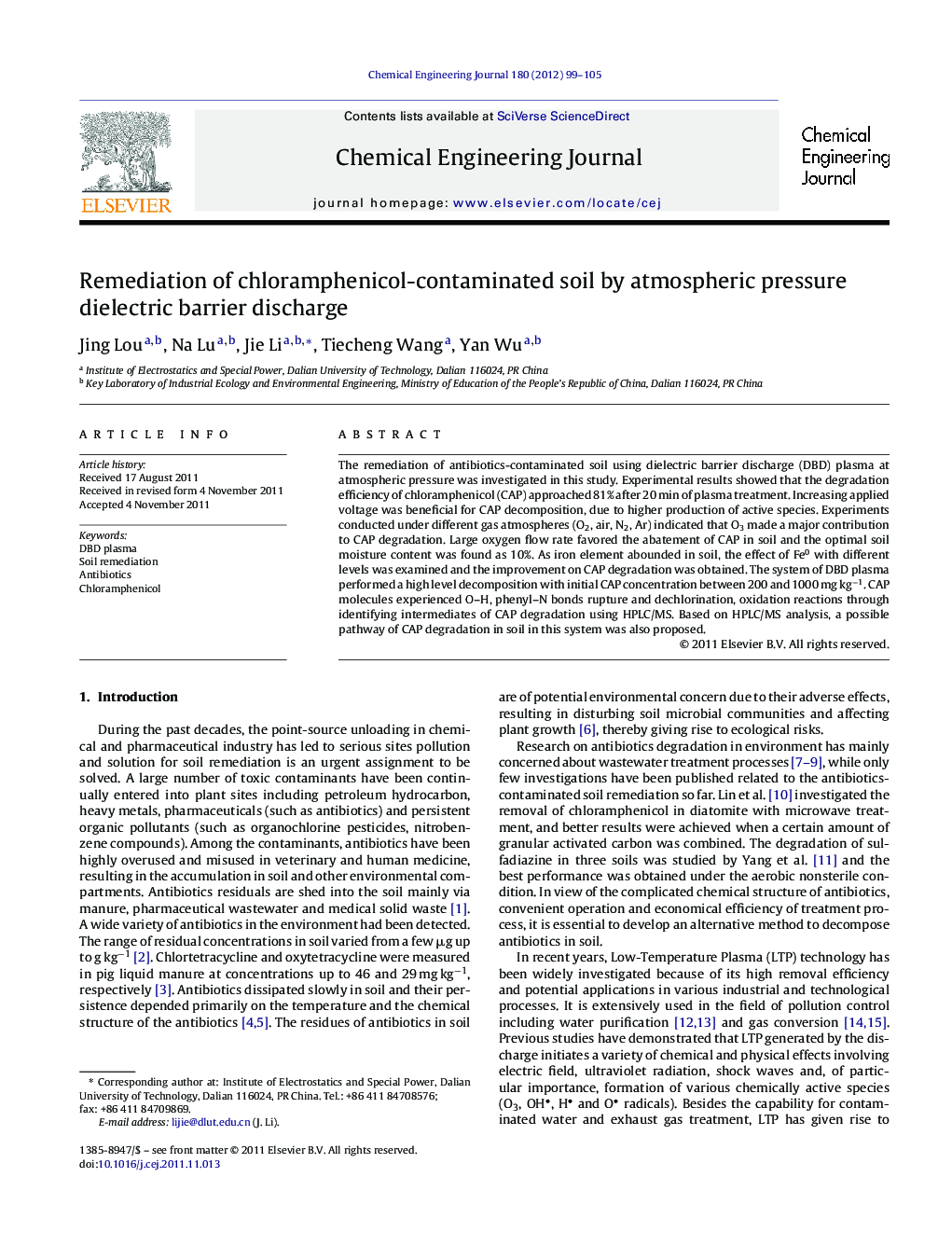| Article ID | Journal | Published Year | Pages | File Type |
|---|---|---|---|---|
| 150354 | Chemical Engineering Journal | 2012 | 7 Pages |
The remediation of antibiotics-contaminated soil using dielectric barrier discharge (DBD) plasma at atmospheric pressure was investigated in this study. Experimental results showed that the degradation efficiency of chloramphenicol (CAP) approached 81% after 20 min of plasma treatment. Increasing applied voltage was beneficial for CAP decomposition, due to higher production of active species. Experiments conducted under different gas atmospheres (O2, air, N2, Ar) indicated that O3 made a major contribution to CAP degradation. Large oxygen flow rate favored the abatement of CAP in soil and the optimal soil moisture content was found as 10%. As iron element abounded in soil, the effect of Fe0 with different levels was examined and the improvement on CAP degradation was obtained. The system of DBD plasma performed a high level decomposition with initial CAP concentration between 200 and 1000 mg kg−1. CAP molecules experienced O–H, phenyl–N bonds rupture and dechlorination, oxidation reactions through identifying intermediates of CAP degradation using HPLC/MS. Based on HPLC/MS analysis, a possible pathway of CAP degradation in soil in this system was also proposed.
► A dielectric barrier discharge reactor is utilized to remediate polluted soil. ► 81% of chloramphenicol in soil is removed within 20 min of discharge treatment. ► A possible pathway of chloramphenicol degradation in soil is proposed.
